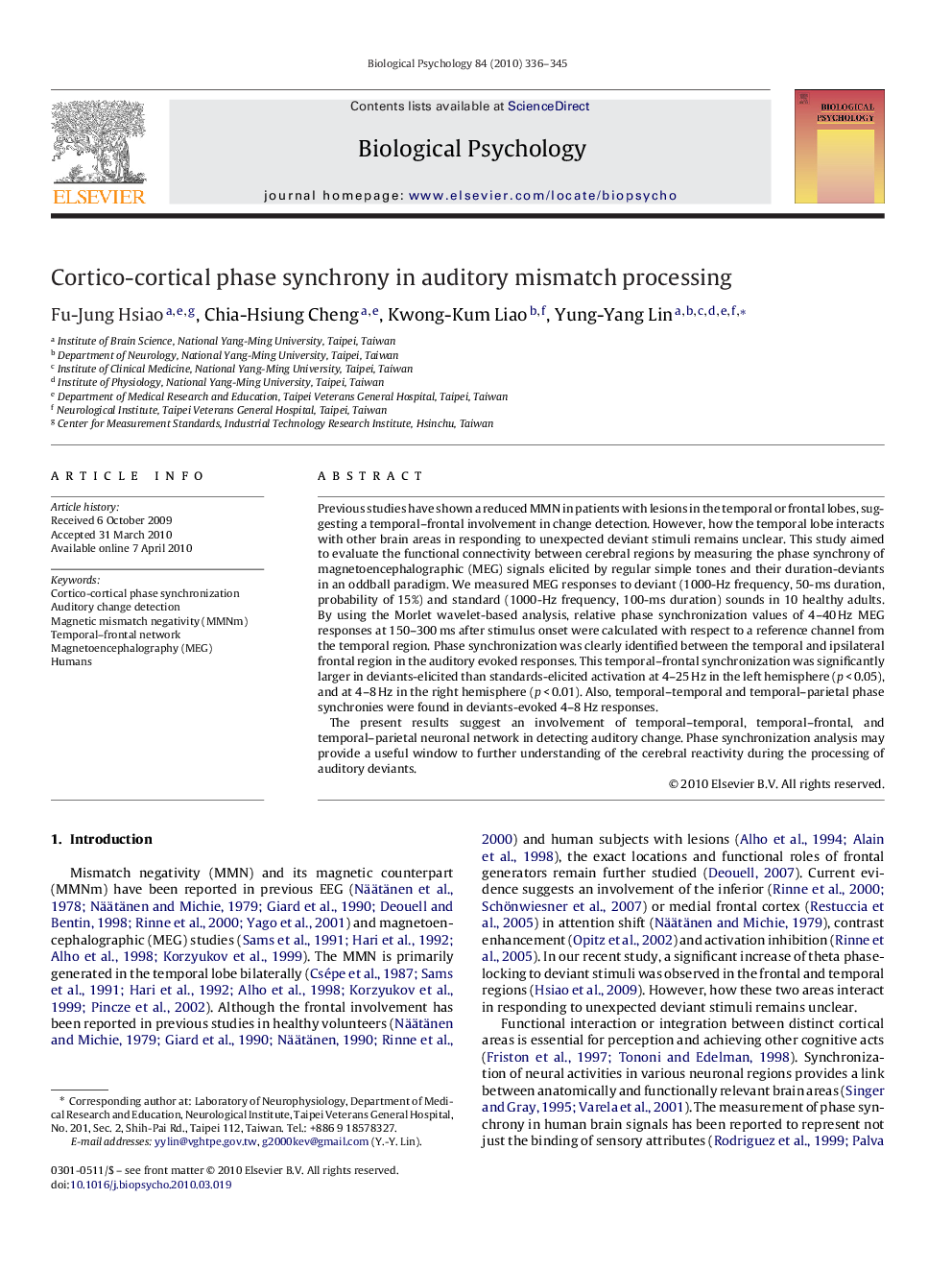| Article ID | Journal | Published Year | Pages | File Type |
|---|---|---|---|---|
| 921446 | Biological Psychology | 2010 | 10 Pages |
Previous studies have shown a reduced MMN in patients with lesions in the temporal or frontal lobes, suggesting a temporal–frontal involvement in change detection. However, how the temporal lobe interacts with other brain areas in responding to unexpected deviant stimuli remains unclear. This study aimed to evaluate the functional connectivity between cerebral regions by measuring the phase synchrony of magnetoencephalographic (MEG) signals elicited by regular simple tones and their duration-deviants in an oddball paradigm. We measured MEG responses to deviant (1000-Hz frequency, 50-ms duration, probability of 15%) and standard (1000-Hz frequency, 100-ms duration) sounds in 10 healthy adults. By using the Morlet wavelet-based analysis, relative phase synchronization values of 4–40 Hz MEG responses at 150–300 ms after stimulus onset were calculated with respect to a reference channel from the temporal region. Phase synchronization was clearly identified between the temporal and ipsilateral frontal region in the auditory evoked responses. This temporal–frontal synchronization was significantly larger in deviants-elicited than standards-elicited activation at 4–25 Hz in the left hemisphere (p < 0.05), and at 4–8 Hz in the right hemisphere (p < 0.01). Also, temporal–temporal and temporal–parietal phase synchronies were found in deviants-evoked 4–8 Hz responses.The present results suggest an involvement of temporal–temporal, temporal–frontal, and temporal–parietal neuronal network in detecting auditory change. Phase synchronization analysis may provide a useful window to further understanding of the cerebral reactivity during the processing of auditory deviants.
